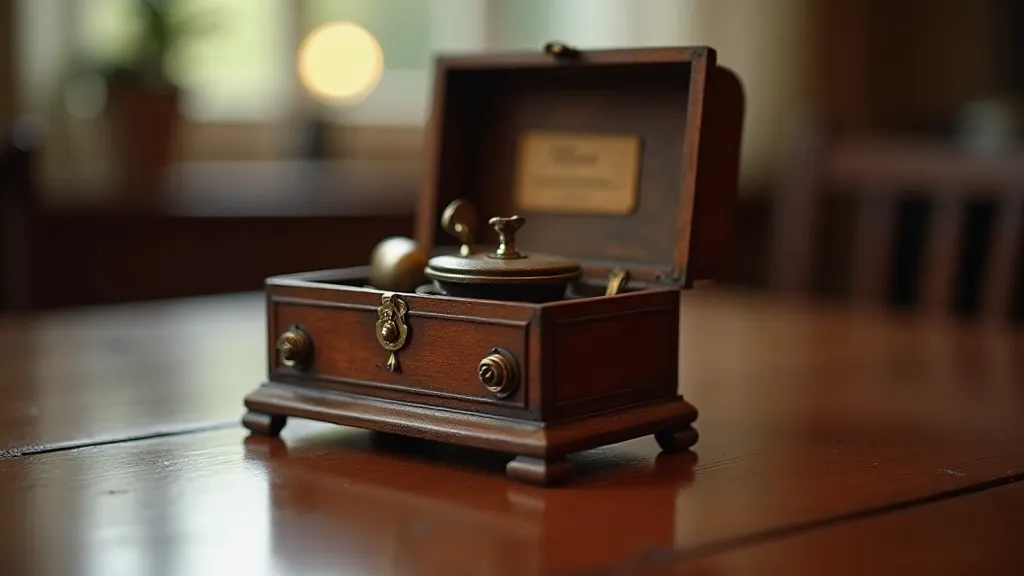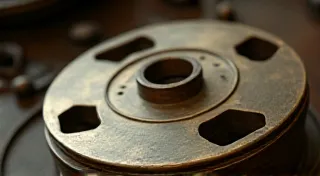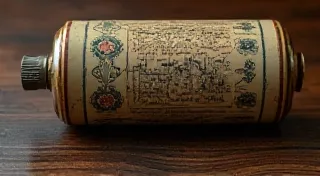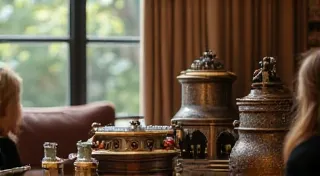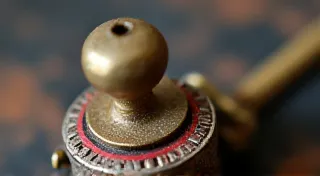Ephemeral Harmonies: A Treatise on the Decay of Melody and the Resilience of Craft
The gentle, tinkling notes of a musical box possess a peculiar magic. They conjure images of Victorian parlors, childhood wonder, and a bygone era defined by intricate artistry and deliberate leisure. But these charming melodies, like all beauty, are tragically susceptible to the ravages of time. To witness a vintage musical box fall silent is to feel a profound sense of loss, a silent testament to entropy’s unwavering grip. This isn's merely a mechanical failure; it's a fading echo of a specific moment in history, a miniature drama played out in gears and pins.
My own introduction to the world of musical boxes came through my grandfather, a retired clockmaker with hands that moved with a quiet precision and a deep reverence for craftsmanship. He had a small collection, each one a portal to a different time and place. I remember being mesmerized by the rosewood box depicting a courting couple, its tiny figures seemingly poised in an eternal dance to the tune of “Blue Bells of Scotland.” One day, that very box, his favorite, stopped playing. The silence was jarring, unsettling. I recall the melancholic look on his face—a combination of sadness and a strange acceptance. “Everything fades, lad,” he’s said, “but some things can be coaxed back to life, if you have the patience and the respect for the original intent.” Those words became a guiding principle for my own ventures into restoration.
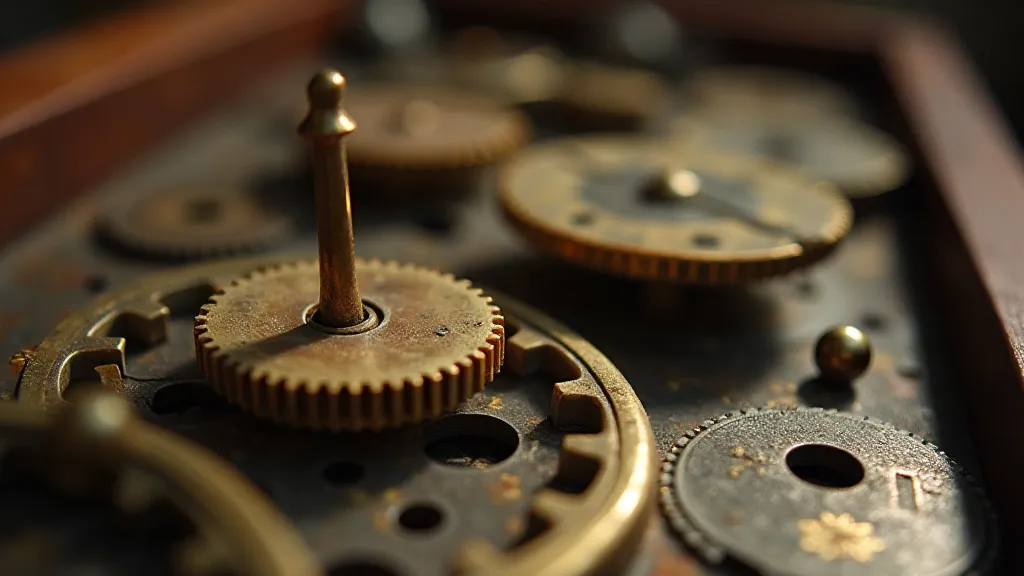
A History Etched in Metal and Ivory
Musical boxes, as we understand them today, emerged in the 19th century, born from the confluence of clockmaking and the burgeoning music industry. Early predecessors, like the elaborate cylinder music boxes of the 18th century, were expensive novelties reserved for the aristocracy. The mid-19th century saw advancements in manufacturing, making these charming devices more accessible to the middle class. Switzerland became the epicenter of musical box production, with names like Junod, Reuge, and Pailliart becoming synonymous with quality and innovation. They weren't simply toys; they were intricate works of art, often adorned with elaborate engravings, enamel work, and precious materials like ivory and mother-of-pearl.
The technology itself is surprisingly ingenious. A pinned cylinder, rotating at a precise speed, plucks tiny metal teeth, each meticulously shaped to produce a specific note. The complexity arises in arranging these teeth to recreate entire melodies. The craftsmanship involved – the precision of the pin shaping, the accuracy of the cylinder grinding, the artistry of the decorative elements – is truly astonishing when one considers the scale of these miniature mechanisms. The intricacies involved can be surprisingly complex, and occasionally, even skilled restorers face challenges that require deep understanding of common problems with antique music boxes and how to address them. The dedication to this level of detail reflects a broader appreciation for the art of craftsmanship, something akin to uncovering the automaton's soul – acknowledging the inherent artistry and skill involved in crafting such intricate machines.
The Silent Years: Understanding the Decay
So, what causes these once-vibrant melodies to fade into silence? The answers are varied and often interconnected. Corrosion is a significant factor. The humid air, years of handling, and the degradation of lubricants all contribute to rust and seizing of the delicate gears and pins. The pins themselves, often made of soft metal, are prone to damage - bending, breaking, or becoming blunted, rendering them incapable of producing a clear note. The cylinder, the heart of the mechanism, can suffer from warping or wear, leading to inconsistent playback. Finally, the bellows (in boxes utilizing an air-driven system) can become brittle and leak, depriving the mechanism of the power it needs to function.
Beyond the purely mechanical, the passage of time takes a more insidious toll. The felt pads that dampen the vibrations of the cylinder can harden and crack, creating a harsh, uneven sound. The wood of the box itself can warp and crack, jeopardizing its structural integrity. Even the scent of the box, often imbued with the lingering aroma of aged wood and varnish, becomes a poignant reminder of its age and the stories it holds. The entire process of restoration demands a meticulous approach, mirroring the original design and materials, a philosophy akin to appreciating the automaton's soul - recognizing the inherent artistry and skill involved in crafting such intricate machines.
The Art of Resurrection: Restoration Principles
Restoring a vintage musical box is a delicate dance between preservation and repair. The primary goal should always be to retain the box’s authenticity – to respect the original design and materials. This isn't about creating a "perfect" reproduction; it's about breathing new life into a piece of history while acknowledging its imperfections. A complete restoration often involves a multi-stage process.
First comes careful disassembly. Each component must be meticulously documented, photographed and cleaned. Corroded gears are often gently cleaned using specialized solvents and ultrasonic cleaners. Damaged pins are either carefully straightened or replaced with replicas painstakingly crafted by hand, often using techniques mirroring the original manufacturing processes. The cylinder requires specialized tools and skills - often involving re-profiling worn areas or replacing damaged sections. Lubrication is crucial, but must be done with materials that won't damage the aged components. The complexities involved in restoring the movement of a Reuge music box, for example, necessitate a profound understanding of its intricate design, a subject explored in greater detail on Restoring the Movement of a Reuge Music Box: A Detailed Guide. Finally, the exterior of the box may be cleaned and carefully re-finished, always striving to preserve the patina of age.
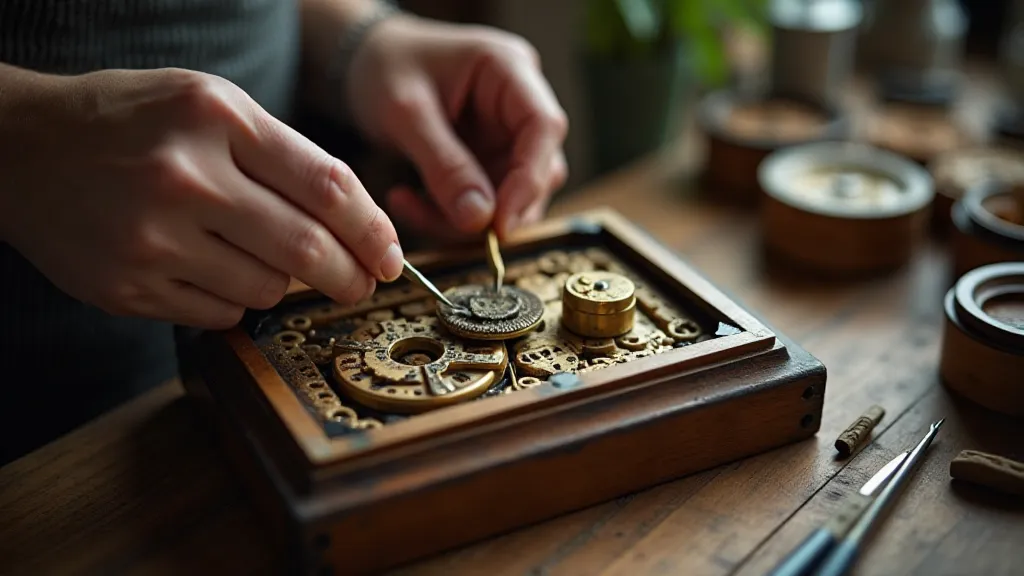
Ethical Considerations: Authenticity and Replication
The question of authenticity looms large in the world of vintage musical box restoration. How far is too far when striving to revive a silent melody? While replacing a broken pin is generally considered acceptable, completely re-creating a lost cylinder or significantly altering the box’s design raises more complex ethical considerations. Some purists argue that any alteration diminishes the box's historical value, while others believe that a functional piece, even with some replacement parts, is preferable to a silent relic.
The philosophical implications extend beyond mere aesthetics. We are, in essence, attempting to combat obsolescence, to defy the inevitable march of time. This act, however small, is an assertion of human ingenuity and a testament to our desire to preserve beauty and meaning. However, it's vital to approach this endeavor with humility, recognizing that we can never truly replicate the original creation or the context in which it existed. Furthermore, the appearance of the box itself can be significantly impacted over time; understanding how to properly restore the finish on a vintage music box, maintaining its character while revitalizing its look, is a significant aspect of the restorative process – details of which can be found on our guide to Restoring the Finish on a Vintage Music Box: Techniques and Materials.
The Poignancy of Imperfection
It’s the imperfections, the tiny cracks in the enamel, the slightly uneven pin placement, the faint scratches on the wood, that ultimately imbue a vintage musical box with its unique character and charm. These marks of age are not flaws to be eradicated; they are stories etched into the surface, silent witnesses to the box’s journey through time. A perfectly restored musical box, devoid of any trace of its past, is ultimately a diminished object. The true beauty lies in the delicate balance between functionality and imperfection, the harmony between the resurrected melody and the silent whispers of history.
My grandfather, observing a newly restored rosewood box playing its familiar tune, once smiled and said, "It's not quite the same, you know. But it sings again. And that, lad, is worth more than perfection." He was right. It's in the echo of the past that we find the true resonance of these ephemeral harmonies.
